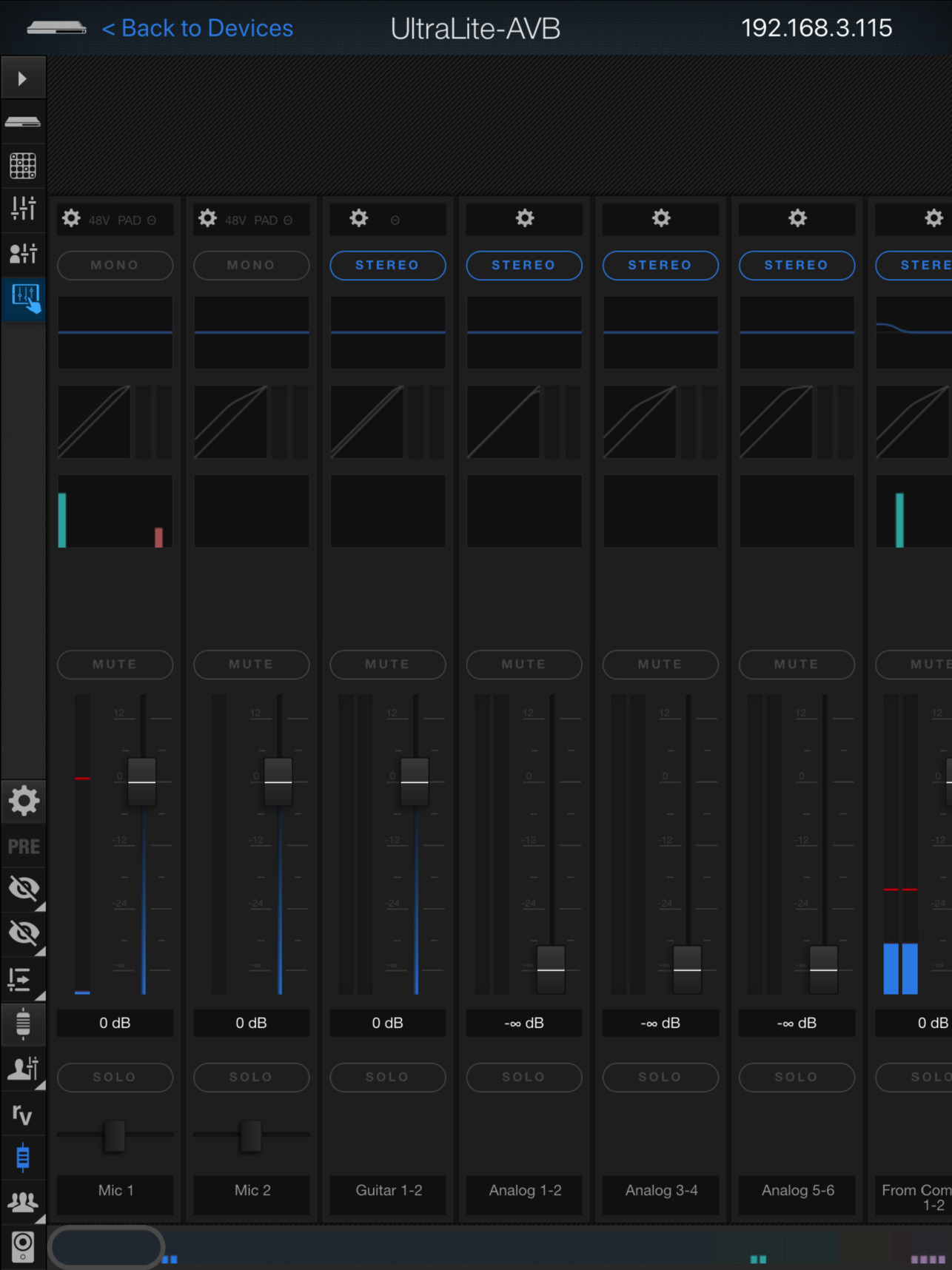Apple turns to existing solutions for many of the challenges it faces in retail. AppleInsider has learned that the London Regent Street Apple Store uses MOTU software to control the audio environment, both for technical reasons, as well as as a practical demonstration for store-goers.
Classically, when running live sound, the sound engineer runs a mixing board that is located in a fixed position, sometimes in the middle of the audience, sometimes off on the side the room in smaller clubs. For live performances in the Apple Retail flagship stores, that won't do.
AppleInsider editor-in-chief Neil Hughes was in the Apple Store as artist Saint Raymond began performing. Hughes noticed an Apple retail employee managing the live sound using an iPad Pro and an app the employee called "Motu."
With a little bit of detective work, it appears the app is MOTU AVB Discover which works with MOTU AVB hardware. The MOTU AVB hardware provides multi-channel mixing with networking, allowing the mixer to be controlled over the Wi-Fi network by the app or a web browser.
A large production might require hardware with more inputs, like a Stage B16 connected to a power amplifier for house audio, connected to a router so that the iPad's Wi-Fi can control it. It appears the Apple Store is using either Stage B16 or something equally as powerful, given that the store employee's iPad shows the interface at the top as Stage-B16 at a 10.200.xxx.xxx address.
As long as the app is in the same network as the hardware, the Apple retail employee can check the sound from a range of locations in the venue just by walking around. Sound engineers never had that much freedom in years past.
MOTU, or Mark of the Unicorn, has a long history, beginning in 1984 when they launched Professional Composer for Macintosh. In 1985, they launched Performer, whose legacy as a sequencing tool lives on today in Digital Performer 9.5. Artists like Pat Metheny, Geddy Lee, They Might Be Giants, and Suzanne Ciani are Digital Performer users.
Given the long history working with Apple and making the right hardware for the job, it's no surprise Apple is choosing MOTU for their in-store live audio.
 Victor Marks
Victor Marks










-m.jpg)






 Charles Martin
Charles Martin
 Christine McKee
Christine McKee
 Wesley Hilliard
Wesley Hilliard
 Malcolm Owen
Malcolm Owen
 Andrew Orr
Andrew Orr
 William Gallagher
William Gallagher
 Sponsored Content
Sponsored Content








23 Comments
As an ex-recording engineer, I don't think someone walking around a venue, constantly fiddling with the sound is the best idea and given the chance to constantly change things, they will. That's why the sound levels in concerts always get higher in the second half of a show: the mixer wants to feel like they're doing something AND they're deaf from the high levels, so they turn it up even more.
In fixed venues, what one would normally do is send white or pink noise through the system and then equalize to the house. This is what the calibration modes in A/V pre-pros and receivers attempt to do. Once you do that, you should not be playing with the overall frequency response (as opposed to the frequency response of a single instrument or mic input).
Due to no soft surfaces at all, the Apple stores that I've been in would actually be great for acoustic performances, but they would be terrible for amplified performances as the sound just bounces around endlessly. Back in the days before amplification, concert halls were designed to have long reverberation times and since amplification, they've largely been designed to have very low reverberation times (except for Classical/Opera music venues). Likewise with movie theaters. And the Apple stores have very long reverberation times.
I've told this before, but when Siri was first released, I went to the Lincoln Square store in NYC to try it out. That store has stone or concrete floors, stone walls, the usual hardwood tables and glass ceilings. Siri wouldn't work because there was so much noise in the store, it didn't understand what I was saying. Then I heard what I thought was a live band coming from the lower level. I went down there and it was just one of those boom boxes to use with an iPhone or iPod Touch, but it was loud and reverberating due to all those hard surfaces. If I were designing those stores, I'd put in random, sound absorbing cloth panels on the walls. And while carpeting would be hell to maintain, it would really quiet those places down.
When I read the headline, what I thought this was going to be about was Apple using electronic environmental noise reduction. Those are systems which input the environmental sound with a microphone and then send out an out of phase signal to counteract it, much the same way as noise reducing headphones work.
A pedant writes: a) it's Soho, not SoHo; and b) neither of Apple's central London stores is in Soho: they neatly bracket it to east and west by being in Covent Garden and Mayfair (late location of the US embassy) respectively.
I wish MOTO were defined at the beginning of the article instead of at the very end. I kept thinking:

Man, I used Mark of the Unicorn MIDI software decades ago to record music. Amazing it's now running on an iPad.
CORRECTION: This is really just MIDI control software, not music creation software.